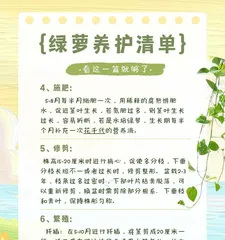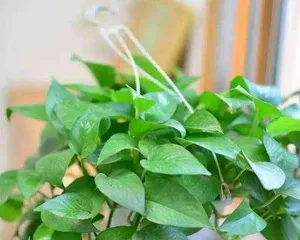Pothos is a common foliage plant with strong reproductive ability and wide adaptability, making it deeply loved by many plant enthusiasts. However, many people have likely encountered the problem of Pothos leaves becoming soft and drooping. What are the exact causes of this problem? How to effectively remedy it? Next, this article will explore the causes and solutions to this problem from three aspects: environment, care, and disease.

I. Environmental Factors
1. Insufficient light: Pothos is a shade-loving plant. If it stays in an environment with insufficient light for a long time, its photosynthesis will weaken, leading to soft and drooping leaves.
2. Temperature too high or too low: Temperature is an important factor affecting Pothos growth. If the temperature is too high or too low, it will have an adverse effect on its growth.

3. Strong wind and dryness: Strong wind can cause considerable damage to Pothos leaves, leading to them softening and drooping. A dry environment can also cause the Pothos to become too dry, which in turn leads to leaf softening.
II. Improper Care
1. Overwatering or underwatering: Pothos has relatively specific watering needs. Overwatering can easily lead to root rot, while underwatering can cause leaves to wilt and soften.
2. Poor soil aeration: Pothos growth requires well-aerated soil. Soil that is too moist or too dense will affect its growth and development.

3. Lack of fertilizer or improper fertilization: Fertilization is a crucial part of ensuring Pothos growth and development. If necessary nutrients are lacking, it can lead to smaller leaves and yellowing. If the fertilizer concentration is too high, it can also damage the roots, causing softening and drooping.
III. Disease and Pest Infestation
1. Leaf infection by pathogens: In a humid environment, leaves are easily infected by pathogens such as fungi and bacteria, leading to softening and drooping.
2. Pest infestation: Pothos is susceptible to pests such as aphids and mites, which suck the plant's sap, affecting its growth and development.
IV. How to Remedy
1. Adjust the environment: Place the Pothos in a location with sufficient light, suitable temperature, and good ventilation.
2. Water moderately: Water reasonably according to the Pothos's growth and seasonal changes, neither too much nor too little.
3. Replace the soil: Remove the Pothos from its old soil, slightly clean off any soil residue attached to the roots, and replant it in new soil.
4. Fertilize to adjust: Fertilize reasonably according to the Pothos's growth, and ensure the fertilizer concentration is not too high.
5. Prevent pests: Regularly check the Pothos for pests and take preventive measures, such as using pesticides.
Soft and drooping Pothos leaves are a common but not difficult problem to solve. By paying attention to the environment, care, and pest control, and making targeted adjustments, you can help your Pothos become lush and prosperous again.